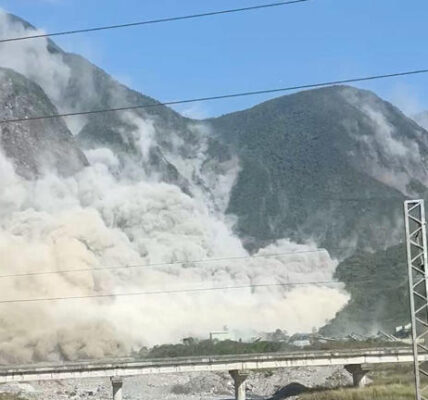Taiwan Earthquake: A Recap of Recent Seismic Activity
In this story, we delve into the recent seismic activity in Taiwan, focusing on the earthquakes that have struck the island nation. From the latest magnitude 5.6 tremor to the more powerful quakes in April, we examine the impact of these events and the response of the affected communities.

© Other
Taiwan Earthquake Strikes Again
Taiwan was rocked by yet another earthquake, this time measuring 5.6 on the Richter scale. The European Mediterranean Seismological Center (EMSC) reported that the quake struck at a depth of 25 kilometers and was felt at 17:45 local time. While the tremor caused concern, fortunately, there have been no reports of casualties or significant damage.
A Series of Earthquakes This recent earthquake follows a series of seismic events that have rattled Taiwan in recent weeks. On April 23, eastern Taiwan, particularly Hualien County, experienced two stronger earthquakes with magnitudes of 6.0 and 6.3. These earlier quakes resulted in the destruction of two buildings and disrupted traffic on several highways.
Prior to that, on April 3, a powerful earthquake struck near the eastern coast of Taiwan. The Taiwan Earthquake Monitoring Agency recorded a magnitude of 7.2, while the US Geological Survey reported 7.4, making it the strongest earthquake to hit the island in the last 25 years. The impact was significant, with 17 fatalities and 1,155 injuries reported in the aftermath.
Community Response and Preparedness In the face of such seismic activity, it’s crucial for communities in Taiwan to remain vigilant and prepared. While the latest earthquake may not have caused major damage, it serves as a reminder of the ever-present threat of earthquakes in the region. Adequate preparedness measures, including robust infrastructure and emergency response plans, are essential for minimizing the impact of such events on lives and property.
Government Initiatives Following the series of earthquakes, the Taiwanese government has likely intensified efforts to improve earthquake preparedness and response. This may include infrastructure upgrades, public awareness campaigns, and drills to educate citizens on what to do in the event of an earthquake. By investing in proactive measures, authorities aim to mitigate the risks associated with seismic activity and protect the population.
Staying Safe During Earthquakes For individuals living in earthquake-prone areas like Taiwan, it’s important to know how to stay safe during tremors. This includes seeking sturdy shelter, staying away from windows and heavy objects, and having an emergency kit prepared with essentials such as water, food, and first aid supplies. Additionally, staying informed through reliable sources about earthquake alerts and evacuation procedures can help mitigate risks.
International Support and Collaboration Given Taiwan’s vulnerability to earthquakes, international support and collaboration are also crucial in enhancing disaster preparedness and response capabilities. Through sharing knowledge, resources, and expertise, countries can work together to strengthen resilience and minimize the impact of natural disasters on affected communities.
Conclusion The recent earthquake in Taiwan serves as a stark reminder of the seismic risks faced by the island nation. While the latest tremor caused minimal damage, it follows a series of more powerful earthquakes that resulted in casualties and destruction. As Taiwan continues to grapple with seismic activity, it’s imperative for communities to prioritize preparedness and resilience-building efforts. Through collective action and international collaboration, the impact of earthquakes can be mitigated, ensuring the safety and well-being of all citizens.
ALSO READ:
“Indonesia volcano eruption: 5 Shocking Reasons You Shouldn’t Ignore!”



